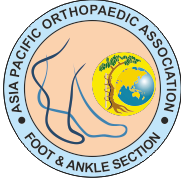Virtual Fellowship 2025
Discuss the various forms of 5th Metatarsal fractures (Jones, Pseudo-Jones, Stress, etc.)
MT5
Table of contents
1.1. 1. Pseudo-Jones Fracture (Avulsion Fracture - Zone 1)
1.2. 2. Jones Fracture (Zone 2)
The 5th metatarsal
The 5th metatarsal, the long bone on the outside of the foot connecting to the little toe, is one of the most common bones in the foot to fracture. The causes and treatment vary significantly depending on the fracture's location, which is typically divided into three zones
he main types of 5th metatarsal fractures are categorized by their location in the proximal (base) area of the bone:
| Fracture Type | Zone (Location) | Common Name | Cause | Treatment |
| Zone 1 | Proximal Tuberosity (very base, closest to the ankle) | Pseudo-Jones Fracture(Avulsion Fracture) | Sudden, forceful inversion(rolling inward) of the ankle/foot, causing the attached peroneus brevis tendon and/or lateral band of the plantar fascia to pull a fragment of bone off. Often occurs with an ankle sprain. | Non-operative is most common: Rest, ice, protected weight-bearing in a stiff-soled shoe, walking boot, or cast for 4-6 weeks. Surgery is rare, typically only for large, significantly displaced fragments. Prognosis is generally excellent. |
| Zone 2 | Metaphyseal-Diaphyseal Junction (just beyond the base/tuberosity) | Jones Fracture | Acute trauma (e.g., forefoot adduction with the ankle plantar-flexed) or repetitive stress (stress fracture). This area has a limited blood supply (a "watershed" area), which makes it prone to delayed healing or nonunion. | Treatment is often controversial and individualized. For non-athletes, initial treatment may be non-weight bearing in a cast/boot for 6-8 weeks. Due to high nonunion rates, especially in athletes or with non-healing, surgical fixation(typically with an intramedullary screw) is often recommended, particularly for athletes to ensure quicker, more reliable healing. |
| Zone 3 | Proximal Diaphysis (shaft of the bone, further out) | Stress Fractureor Diaphyseal Fracture | Chronic repetitive microtrauma(overuse/fatigue), often seen in athletes (runners, dancers) or those with biomechanical issues (e.g., a high-arched foot). Acute fractures here are often called "Dancer's fractures." | Non-operative for non-displaced acute fractures (immobilization, non-weight bearing). Surgical fixation (intramedullary screw) is frequently recommended for stress fractures in this zone, especially for athletes, due to the high risk of nonunion. |
1. Pseudo-Jones Fracture (Avulsion Fracture - Zone 1)
Cause: A powerful, sudden pull by the peroneus brevis tendon or lateral band of the plantar fascia during an ankle roll (inversion injury).
Treatment: Highly successful with conservative management, as the fracture is typically stable and has a good blood supply. This involves RICE (Rest, Ice, Compression, Elevation) initially, followed by a walking boot or stiff-soled shoe for protected weight-bearing for about 4 to 6 weeks. Surgery is rarely needed.
2. Jones Fracture (Zone 2)
Cause: Can be an acute break from trauma (adduction force to the forefoot) or the endpoint of a developing stress fracture from repetitive force. The fracture occurs in a critical area with poor blood supply, which is the primary reason for healing difficulties.
Treatment:
Non-operative: Usually involves a period of strict non-weight bearing in a short-leg cast or boot for 6 to 8 weeks, with close monitoring via X-rays. This is often tried first for non-displaced fractures in less active individuals.
Operative (Surgery): Often preferred for athletes, displaced fractures, or if non-operative treatment fails (delayed healing/nonunion). Surgery typically involves intramedullary screw fixation to stabilize the fracture and promote healing, often allowing a faster return to sport. Bone grafting or a bone stimulator may also be used to aid healing.
3. Stress Fracture (Zone 3)
Cause: Chronic, repetitive stress overload on the bone. Common in people who suddenly increase the intensity or duration of activities like running or jumping, or in those with underlying foot structure issues.
Treatment:
Non-operative: Rest, modified activity, and protective footwear (boot/cast) are initial steps. However, due to the biomechanical forces and poor healing potential in this region, the required non-weight-bearing period is often long.
Operative: Similar to a Jones fracture, surgical fixation (intramedullary screw) is often the preferred initial treatment for athletes or high-demand patients due to the high nonunion rate associated with conservative treatment in this zone.
General Treatment Principles [edit]
Regardless of the type, initial management often includes:
Immobilization: Using a cast, splint, or walking boot to hold the bone in place.
RICE Protocol: Rest, Ice, Compression, and Elevation to manage pain and swelling.
Non-weight Bearing: Using crutches or a knee scooter to keep weight off the foot, especially for Jones and stress fractures.
Rehabilitation: Physical therapy is usually required after immobilization to restore strength, range of motion, and a normal walking pattern

